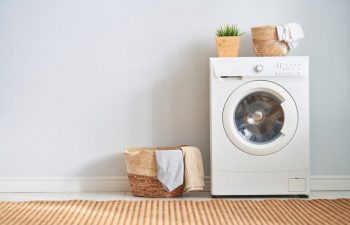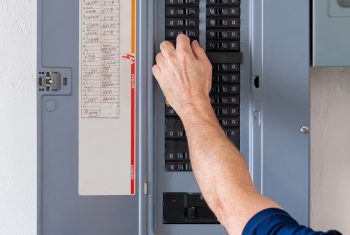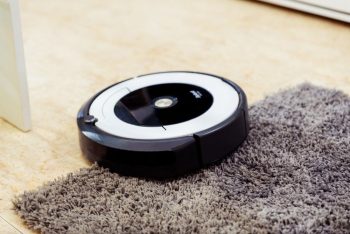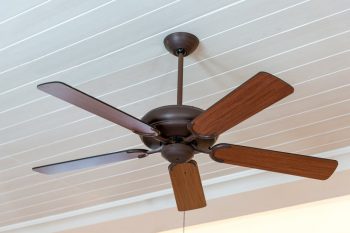
Maintaining a clean home has never been easier thanks to the advent of robot vacuums. These compact, automated devices have taken the market by storm, tirelessly cleaning our homes while we get on with our lives. But what happens when your robot vacuum stops working as expected? In this comprehensive guide, we will walk you through how to diagnose and repair a robot vacuum, ensuring it continues to keep your home spick and span.
To repair a robot vacuum, first diagnose the issue by checking for obstructions, inspecting the battery, examining the wheels and drive system, cleaning and inspecting the brushes, and checking the sensors. Once you’ve identified the issue, you can fix it by addressing battery issues, clearing brush and suction obstructions, fixing wheel malfunctions, cleaning sensor issues, updating software/firmware, replacing a malfunctioning motor, or cleaning the filters. If the issue persists, consider consulting a professional repair service. Regular maintenance can also help prevent future issues.
Common Issues with Robot Vacuums
Before diving into the repair process, it’s crucial to understand the common issues you might encounter with your robot vacuum. These include:
- Insufficient battery life: Robot vacuums sometimes stop mid-cleaning due to a low or failing battery.
- Tangled brushes or clogged suction: Hair, fibers, or other debris can get caught in the vacuum’s brushes, impeding its performance.
- Sensor Issues: Dirty sensors can cause navigation problems, preventing the vacuum from docking or cleaning effectively.
- Noise: While not as loud as traditional vacuums, robot vacuums can still generate noise, which may be a disturbance for some.
- Poor suction: Smaller motors in robot vacuums may not generate as much suction as their traditional counterparts.
Diagnosing Robot Vacuum Issues
Before you can fix the problem, you need to know what the problem is. Here’s how to diagnose common issues:
- Check for obstructions: Inspect the vacuum for tangled hair or objects blocking the brushes, wheels, or suction system.
- Inspect the battery: Make sure the robot vacuum is properly charged. If the battery is old or damaged, it may need replacing.
- Examine the wheels and drive system: Check the wheels for any wear or damage. Look for any hairs or strings wound around the wheelbase.
- Clean and inspect the brushes: Clean the brushes and check for any rusted bearings on the brush holder.
- Check the sensors: Clean the sensors and ensure they are functioning properly. If the issue persists, contact customer service.
How to Repair a Robot Vacuum
Once you’ve identified the issue, it’s time to fix it. Here are step-by-step instructions for repairing common robot vacuum issues:
- Battery issues: If the robot vacuum isn’t turning on or has a short runtime, it might be a battery issue. Ensure it is properly connected and charged. If the battery is old or damaged, consider replacing it.
- Brush and suction obstruction: Turn off the robot vacuum and inspect the main and side brushes for tangled hair or fibers. Use a toothbrush or a similar tool to untangle and clean the brushes. Also, check the suction system for any clogs and clear them using the toothbrush.
- Wheel malfunction: If the robot vacuum stops due to wheel issues, inspect the wheels for any obstructions or damage. Remove any debris caught in the wheels and ensure they can rotate freely.
- Sensor issues: Clean the sensors on the robot vacuum using a soft cloth. Dirty sensors can cause navigation problems and affect the vacuum’s performance.
- Software/firmware updates: Make sure your robot vacuum’s software is up-to-date as outdated software can cause performance issues.
- Motor malfunction: If the motor powering the wheels or brushes is malfunctioning, you may need to replace the motor component. This is a more serious issue and may require professional assistance.
- Filter cleaning: Regularly clean or replace the filters in your robot vacuum to maintain optimal performance.
Remember that specific issues and solutions may vary depending on the robot vacuum model and manufacturer. Always refer to the user manual for model-specific instructions and troubleshooting tips.
When to Call a Professional
If the issue persists after attempting these troubleshooting steps, it’s time to consult a professional repair service. Some robot vacuum manufacturers offer customer support and repair services. You can also look for local or national repair centers specializing in robot vacuums.
Preventive Measures
Regular maintenance can prevent frequent or severe damage to your robot vacuum. Here are some tips to keep your robot vacuum in top condition:
- Regularly clean the vacuum: This includes the dustbin, filters, sensors, brushes, and wheels.
- Check for software updates: Make sure your robot vacuum’s software is up-to-date.
- Handle with care: Avoid dropping or mishandling the vacuum.
- Store properly: Store the robot vacuum in a clean, dry place to protect it from dust and debris.
In conclusion, while robot vacuums are complex devices, understanding their common issues and knowing how to diagnose and fix them can save you a lot of time and money. By following this guide, you can keep your robot vacuum running efficiently and keep your home clean.
Frequently Asked Questions
How often should I replace the battery in my robot vacuum?
The battery life of a robot vacuum varies based on the model and usage. However, most robot vacuum batteries last between 2 to 3 years. Always refer to your user manual for specific recommendations.
How often should I clean my robot vacuum’s brushes?
It’s best to clean the brushes of your robot vacuum every one to two weeks, depending on how often you use it. If you have pets, you might need to clean them more frequently due to pet hair build-up.
Could I use a wet cloth to clean the sensors of my robot vacuum?
No, it’s not recommended to use a wet cloth to clean the sensors. Instead, use a soft, dry cloth to gently wipe the sensors and keep them free from dust and debris.
How often should I update my robot vacuum’s software?
It’s recommended to check for software updates every few months. However, if you notice any performance issues, it’s a good idea to check for updates immediately as they often include bug fixes and improvements.
What should I do if my robot vacuum is making a lot of noise?
Excessive noise from a robot vacuum could be due to a variety of reasons, such as a clogged filter, worn-out brushes, or a damaged motor. Check these components and clean or replace them as needed. If the noise persists, it’s best to consult with a professional.












